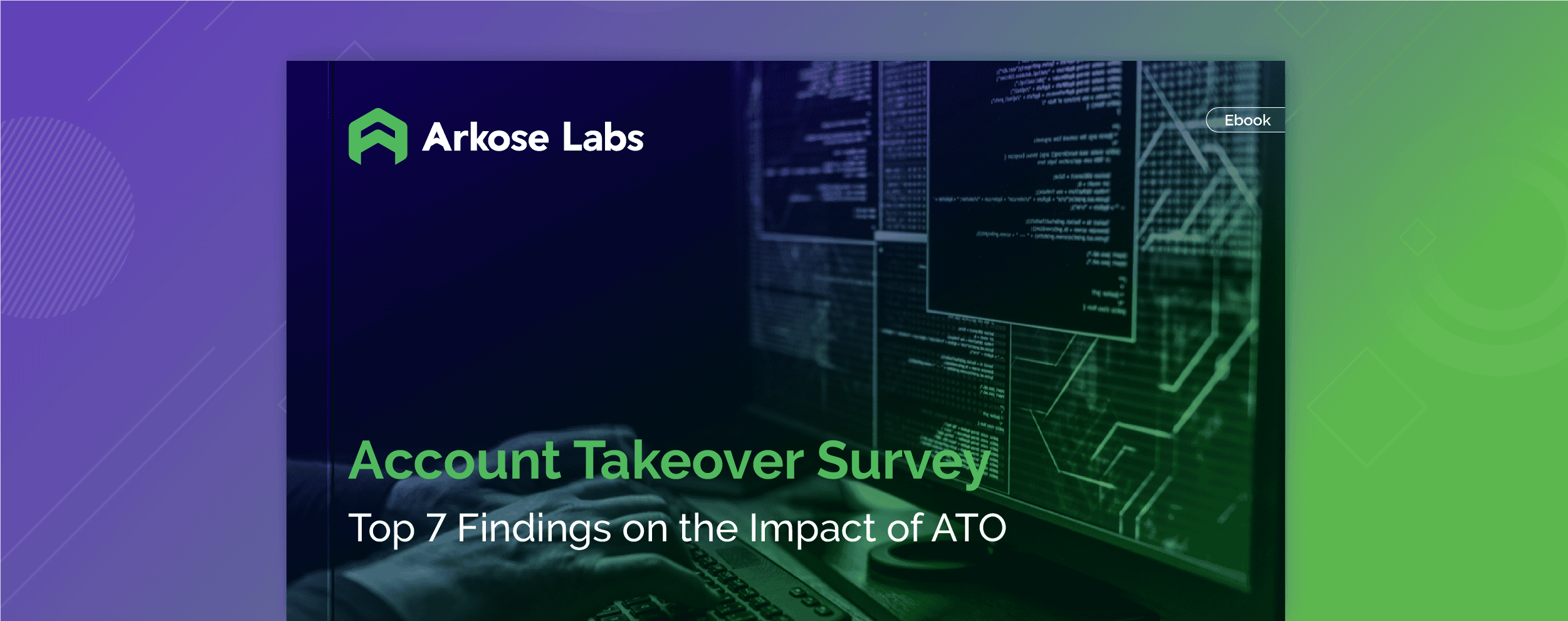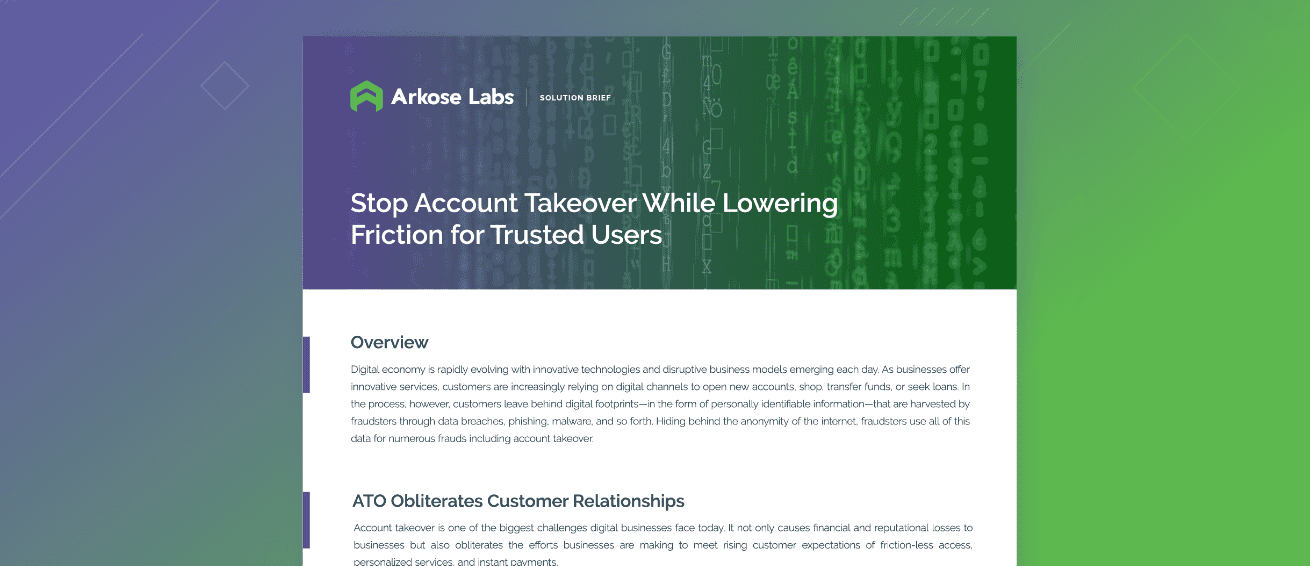In the world of modern business, a resilient cybersecurity framework is a prerequisite for success. With the advent of technological progress, a host of novel security threats, notably account takeover (ATO) and identity theft, have emerged. While these two categories of cybercrime may seem comparable, and both fall under the category of Cybercrime-as-a-service (CaaS), they differ markedly in their nature and effects. Organizations looking to shield their assets and reputation from these threats should strive to understand the nuances of ATO and identity theft, two current attacks that are costing businesses millions every month.
While ATO involves a cybercriminal gaining unauthorized access to a victim's financial account, identity theft entails the criminal using the victim's personal information to assume their identity for various fraudulent activities. For instance, in the case of an ATO, the perpetrator takes control of an existing account, whereas in identity theft, a new account is opened or a new line of credit is taken out in the victim's name. Both forms of cybercrime can result in severe financial and reputational damage for businesses, necessitating robust measures to safeguard against them.
Ready to take on ATOs at your organization? Check out our solution brief:
Detailing ATOs
To craft effective ATO attacks, bad actors employ a range of digital techniques, such as:
- Phishing
- Malware
- SIM card swapping
- Man-in-the-Middle attacks
All of these attack models enable fraudsters to assume control of an unauthorized account. Given the severe financial losses and complex mitigation efforts involved, ATOs pose a significant threat to both financial institutions and their customers.
Signs of ATO fraud include sudden password change requests or repeated login failures. Successful ATOs can lead to chargebacks, disputes, and strain the account holder's relationship with their financial institution. Also, ATOs are hard to detect since fraudsters can impersonate normal login behavior and leverage the customer's positive history. Regular monitoring helps to identify early warning signs of ATO fraud and prevents it from happening.
Tired of reading? Learn more about the tools and tactics being used
in today’s ATOs by listening to our webinar:
Stopping the Scourge of of Sophisticated Banking ATOs
Explaining Identity Theft
Unlike ATOs, identity theft is not a new concept. Even before the advent of computers, individuals were known to rifle through trash and rummage through mailboxes to gain access to personal information. With the introduction of digital technology, it has become easier for criminals to utilize stolen personal details for illicit activities without requiring advanced cyber skills.
Similar to ATOs, criminals craft sophisticated online schemes, such as phishing and ransomware, to gain access to personal information. Moreover, most people remain unaware of the level of disclosure they make on various social media platforms, leading to further disclosure of their personal information. From taking out unauthorized bank loans to submitting fraudulent tax returns to the IRS, the damage caused by identity theft is often considerable.
Detecting & Preventing Attack
Fraud and security teams face difficulties in combating bot activity and emerging ATO techniques without an AI-powered risk engine for real-time detection. Changes in a customer's email, phone number, or address associated with their financial or ecommerce accounts may indicate ATO, but it's hard to distinguish legitimate from fraudulent activity. Detecting ATO fraud in real-time is crucial to prevent further damage, which is why an accurate risk engine is essential.
The rapid growth in connectivity, convenience, and online payment options has made financial transactions more accessible for individuals and businesses. It's crucial for companies to continuously evaluate their information security standards, internal controls, policies, and procedures to identify, measure, monitor, control, and report on any weaknesses that could be exploited by employees, management, vendors, or outside perpetrators.
Identity Proofing with Arkose Labs
Identity proofing involves verifying a digital user's claimed identity with their actual identity, using methods such as credit reports or biometrics. It enables businesses to ensure that users are truly who they claim to be. Before issuing an account and login credentials to a user, companies typically follow the common protocol of identity proofing.
In addition to verifying identity through credit reports or biometrics, identity proofing offers businesses an interactive means for authentication via face-to-face, telephonic, or web-based interactions. An example would be presenting a valid document to confirm identity before checking into a hotel. As more transactions take place in the digital realm, identity proofing becomes a valuable authentication method for high-risk activities such as fund transfers or accessing sensitive information.
Today, businesses need identity proofing solutions that can pinpoint bad actors with accuracy so as to allow good users to continue enjoying their digital journeys without any disruption. With growing digital traffic, businesses need identity proofing solutions that allow users to self-verify their identities. Arkose Labs uses real-time risk assessment and combines it with targeted friction in the form of Arkose Matchkey challenges to help businesses accurately identify attackers from good users—all while finding considerable long-term savings.
Stop ATOs & Identity Theft
The Arkose Labs security platform leverages data-driven, real-time fraud intelligence and secondary screening of risky traffic to provide businesses with reliable solutions to address ambiguity. Real-time risk assessments classify traffic based on probable intent, which informs the system if additional authentication is necessary. Instead of outright blocking traffic, Arkose Labs uses targeted friction only for high-risk traffic, ensuring the majority of good users can pass unchallenged.
The platform's custom enforcement challenges are context-based and adaptive visual challenges that halt both automated and human-driven account takeover attempts. These challenges are designed to defeat machine vision software, causing bots and automated solvers to fail. By incrementally increasing the complexity of challenges, Arkose Labs saps human fraudsters' resources, wearing them down and compelling them to abandon attacks.
Let us help your business stay protected. Contact us anytime to book a demo.



